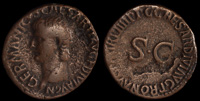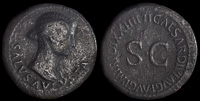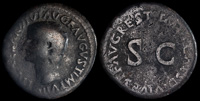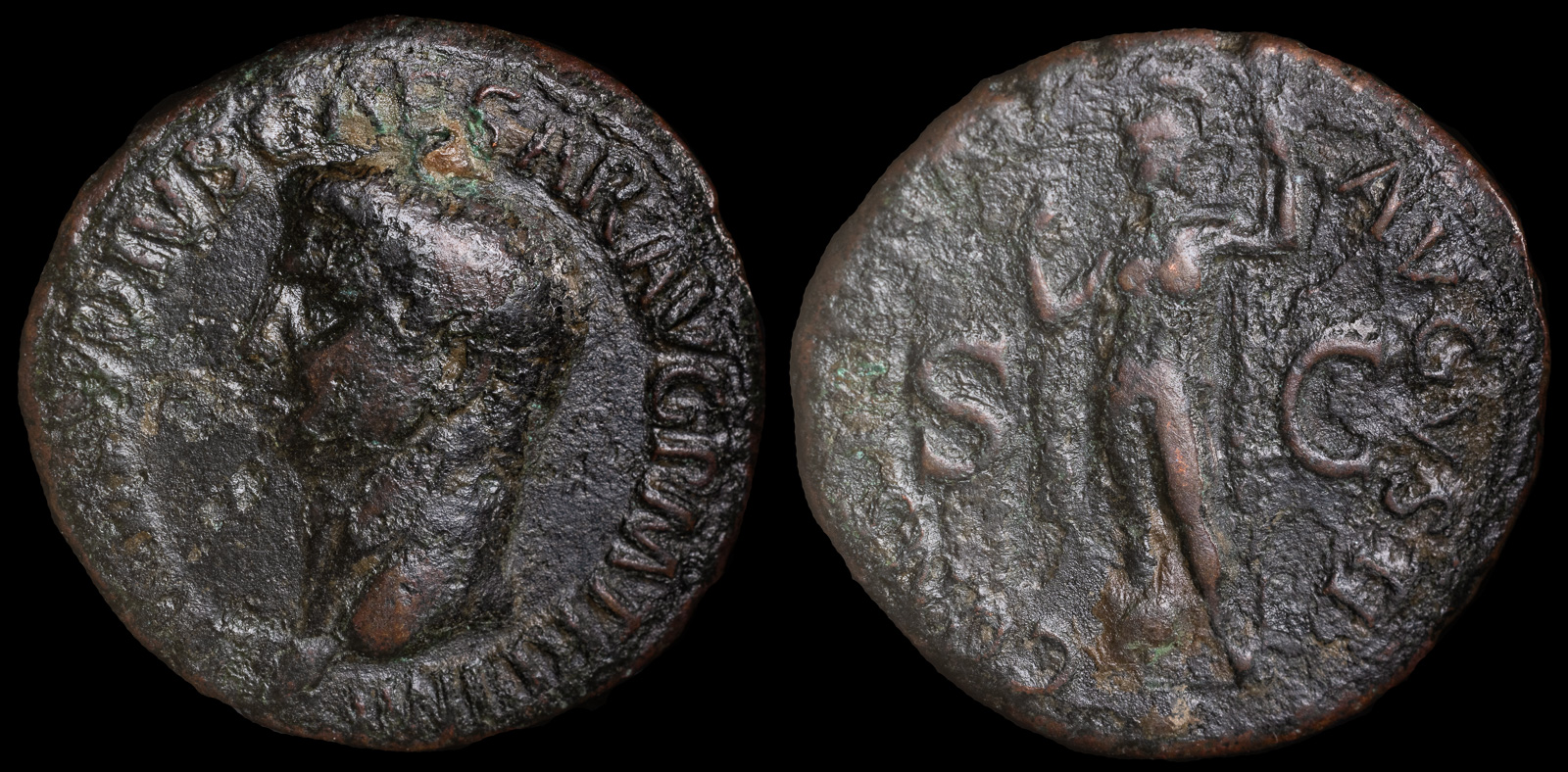As
View All Tags
The as first appeared around the 3rd century BCE during the early years of the Roman Republic. Initially, it was a bronze coin, and its value was based on the Roman system of weights and measures, with one as roughly equal to the weight of 1/12 of a Roman libra (pound), which weighed about 327 grams. The as was a unit of trade in both its physical weight and its usage as a means of exchange. Early Roman coins like the as were issued primarily for the local economy, and they often carried the emblematic marks of Roman power and authority, including the symbols of deities, animals, and important figures in Roman life.
In its early history, the as was usually struck in bronze and featured a simple design, often showing the image of the Roman god Janus (the two-faced god of beginnings and transitions) or the head of Hercules, both symbolizing power and stability. The reverses of these coins often depicted various symbols related to Rome’s agricultural roots, such as horns of plenty, or military symbols, reflecting the early Republic’s focus on both agriculture and expansion.
By the mid-2nd century BCE, the Roman Republic began to face economic challenges, particularly due to its expanding territorial holdings and the rising costs of warfare. As a result, the weight of the as was reduced to keep up with inflation and the needs of the expanding empire. During this period, the as was also gradually replaced by the introduction of silver coins like the denarius, which became more widely used for larger transactions, while the as remained in circulation for smaller, day-to-day exchanges. The weight of the as continued to decrease over time, and its size became more compact. It eventually transitioned from a large bronze coin to a smaller bronze or copper piece, and by the time of Emperor Augustus (27 BCE–14 CE), the as had significantly lost its value and importance as the backbone of Roman coinage.
In the early Empire, the as continued to be struck, but its value was much diminished compared to earlier periods. Augustus reformed the coinage system, and the as became part of a broader system that included larger denominations like the sestertius and the denarius. Over time, the as became less prominent in Roman transactions, overshadowed by these larger, more valuable coins that could facilitate trade and pay Roman soldiers, as well as fund the vast imperial bureaucracy. However, the as remained a popular and familiar coin for commoners, and its symbolism persisted in Roman society as a representation of both daily life and the enduring power of Rome.
By the late Empire, the as had mostly disappeared as a functional currency, although it still existed as part of the numismatic record.

Claudius 41-54 CE

Drusus, son of Tiberius 80 CE

Germanicus 42-43 CE

Livia 14-29 CE

Tiberius 80-81 CE
